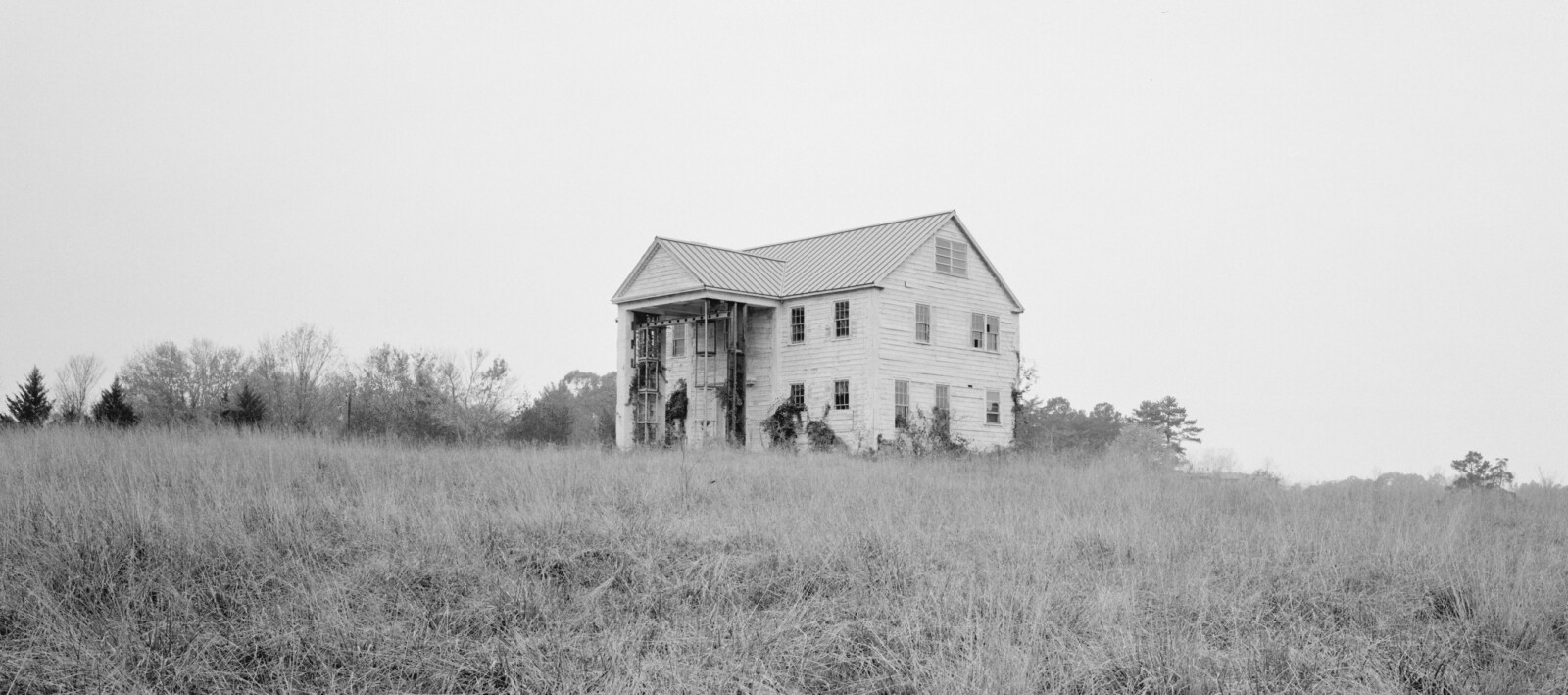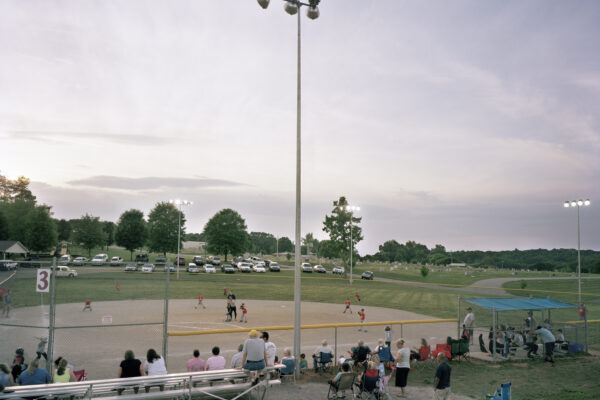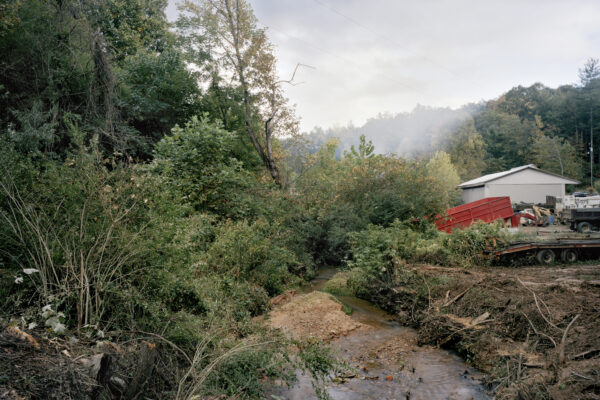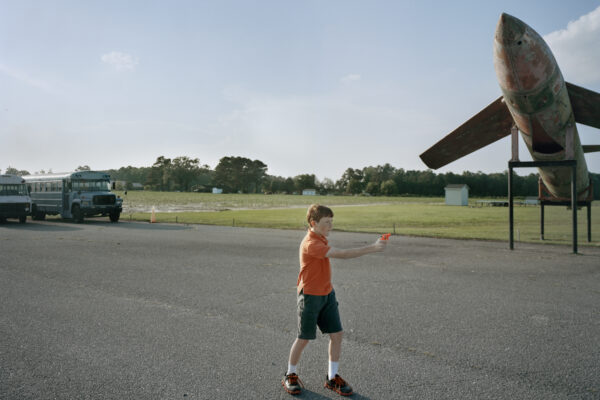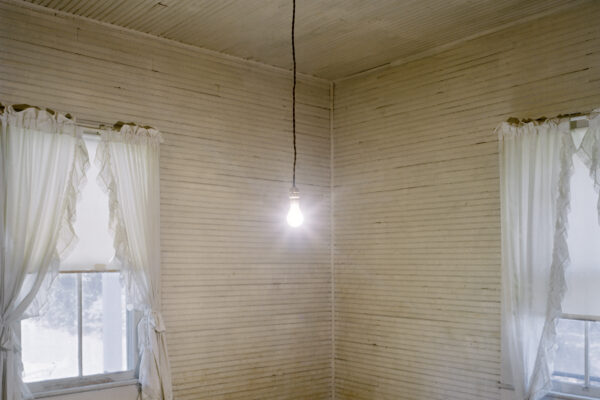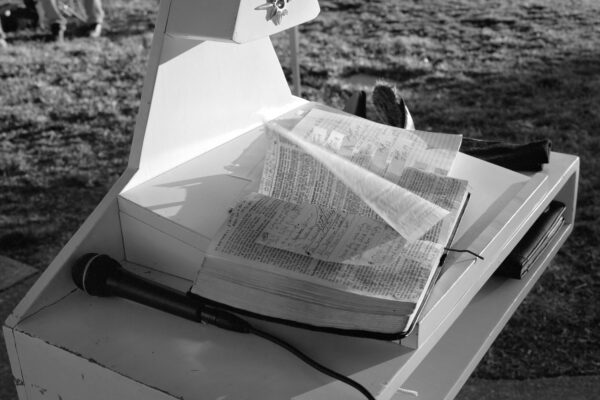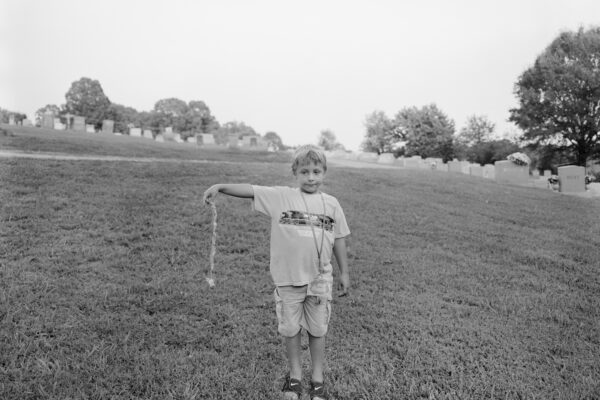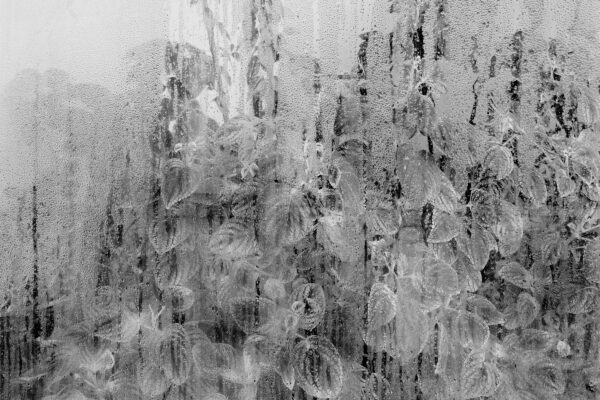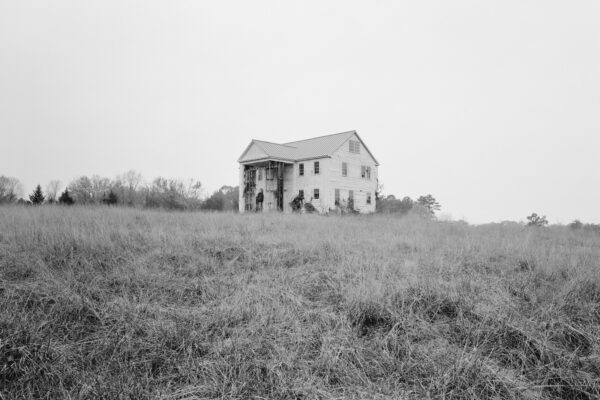- Picture 005
As a photographer of the American South, Aaron Canipe investigates questions that are deeply connected to its landscapes and people. Through a lens of melancholy and darkly tinted humor, he asks where these people come from, where they are going, and how religious beliefs shape the ways in which they perceive the world. He provides sustained attention to these questions, finding beauty in a place where few choose to look for it. In this interview, Canipe discusses growing up in a small town in North Carolina, the changing landscape of the American South, and the relationship between photography and theology.
The Other Journal (TOJ): Much—if not all—of your work has to do with where you grew up. Can you tell us a little about Hickory, North Carolina, and how growing up in the South permeates your work?
Aaron Canipe (AC): Hickory is situated in the foothills about an hour northwest of the much-larger city of Charlotte. Like its metropolitan neighbor, Hickory is known for racing—one of Jeff Bridges’s first movies, The Last American Hero, depicts some of that racing culture—and like other small towns and cities across the United States, Hickory’s industries, which were primarily furniture and textiles, are mostly gone. If you were into the arts like I was while growing up, there weren’t many offerings.
As a kid, I lived happily in a world of my own creation. I spent my time drawing and photographing, and the landscape in and around my hometown became the setting for my imagination. While taking the long route to school on the bus, I would imagine this creek out the window connecting to another larger creek and then to another and then, eventually, to an ocean. I knew there was a bigger world out there, but the starting point for understanding and imagining that world always began at home.
I can’t say I thought of where I lived as distinctly Southern until I left. By leaving and slowly learning to see with a camera, a sense of agency and curiosity about my point of origin was ignited. My South, I discovered, was nostalgic, nearly romantic, and tinged with dark humor. There was always an overarching theological slant there, too—not that these ideas are particular to the region, but they are particular to my photographic voice.
TOJ: In your series Plateau, you document the North Carolina Piedmont, the part of the state between the mountains and the coast that includes Hickory. You also write that the series is about change and lost innocence. Can you tell us about the change you see in this landscape and why you started this project?
AC: Throughout college, I documented my hometown and its environs while on fall breaks and summer vacations, but there was never enough time for me to explore a trajectory, and I became frustrated at not being able to continue the line of thinking that some of the photographs created. I always felt like my work would be better if I could linger. And so now I have had the opportunity to linger and continue that work but in a more nuanced way. In fact, I see all of my work—back in college, and the work I am exploring even now—as a part of one stream that breaks off into creeks or even into a river, and in that way, my work is all a part of one idea and it is all a part of me. I suppose the changes I’ve noticed are related to who I am and to where I’ve been on that stream. When I think of change, I have an image in my head from that long drive to school of two winter trees mirroring each other in a large field. I can picture a light fog drifting by, cows standing in the grass, and the sun peeking right between those two trees. It’s the kind of image you might see in a calendar. But then one day, the trees are replaced by a million-square-foot retail distributor. Those snapshots and their mixture of hope and hurt are present in my work—I see photographing those landscapes as a perfect vessel for that tension.
TOJ: You’ve written that “this series explores lives and landscapes in transition, like a plateau itself, neither in decline or progression, but a holy stasis that only photography can showcase.”1 Why do you believe that only photography is the right medium for this project?
AC: I might not say it’s the right medium for the project, but it’s the right medium for me. Static visuals are ripe with metaphor, and what has symbolic meaning for me may mean something different for you. Since photography’s birth, it has aspired to record reality. My photography deals with slices of the real and what has or will transpire outside of the frame is left to a viewer’s imagination. All we have is a still image to go by—a single moment in time that is just a transition to another and then another. That’s also how it felt for me to grow up in a small town in the South—I felt stuck or in transition, as if I were looking for other opportunities outside of the frame. Because of this, I don’t think I could say how I feel about my part of the world in any other way than with photographs.
TOJ: The photographs in Plateau depict everything from a little-league baseball game to a boy in a chicken costume and a poster of Jesus that accompanies a display of testosterone pills in a pharmacy. Can you explain your process for this series? What led you to these particular people and places?
AC: I think the photographs are so varied because I can’t stay still. I’m always so interested in what’s just down the road. That idea of getting just one more image is, I think, important to photographers. In my experience, the shots from the end of the day are the best ones—when the light is a little softer or you’ve worn yourself out from driving or walking and you slowly become more open to the possibility of compositions. There’s an energy there that drives my curiosity. Some photographs in Plateau come from visiting one place or one area season after season; others come from stepping outside of what’s familiar to me. I would set a vague destination and then walk the scenic route, trying to find something I haven’t seen before. I’m naturally very shy, but I would push myself to talk to people. This entire process led to moments of intense anxiety, but I also trusted that my eye would spot good photographs.
TOJ: It seems fairly evident that you cannot document the South without also documenting religion in the South, and this is a theme that comes up often in your work. On your website, you include this quote from Flannery O’Connor: “I measure God by everything I am not. I begin with that.”2 What does this mean to you and how does it relate to your work?
AC: That quote was taken a bit out of context. It occurs during a long correspondence that took place between O’Connor and a mysterious A. Her and A are talking about her conversion to Christianity, and O’Connor indicates that she believes conversion is a continuous process—a slow turning away from one’s own self. For me and my work, the meaning is a little different. I begin with those imperfections. When I reveal the imperfect part of myself to my subjects, they too reveal something about themselves. That humbling is what can make a successful photograph.
In thinking about landscape photography and photography in general, the use of juxtaposition and comparison is also an important tool for me. Particular to Plateau, I’ve suggested a lot of comparisons between the world and an idealized Garden of Eden or Christ himself. For example, in Creek, Bethlehem, NC, there’s an aspect of untamed and flourishing nature, but at the edges of the photograph mangled tree roots and a sewer pipe start to encroach. In another image, I photograph a poster of Christ on a pharmacy endcap next to jars of testosterone boosting pills. It’s that kind of expectation versus the reality of what Christ or Eden should be—even Jesus has chest hair peeking through his tunic—that I hope drives the reading of these images.
TOJ: Related to this, I’m interested in your series Creation Story, which includes a set of images that directly addresses the ideas of creation stories, beginnings, and where we come from. These images seem to suggest that we become the stories we tell about ourselves.
AC: Throughout Plateau, I was making a lot of black-and-white images alongside color images. Many of the black-and-white images were cut from the project because it took too much conceptual heavy-lifting to mix black-and-white images and color images. I was forcing it. It can be done successfully, but maybe not by me. Not yet. Those black-and-white images had another voice, and it wasn’t only because of their monotonality; it was also because there was a deeper questioning in those images than in the color images.
Creation Story, then, is a kind of Genesis story with some earthly trip ups. As I considered the black-and-white images, I thought about Sigmund Freud, as Freud theorized that a child’s interest in dinosaurs was a questioning of their own origins. I was one of those kids who believed that if I dug deep enough, I’d find fossils in our North Carolina creek beds. And I feel like searching for origins in this way connects to both primordial and cosmological themes. Of course, all these ideas came later, after my photographs talked back to me.=
TOJ: Many photography theorists—Roland Barthes and Susan Sontag, to name two—use theological language to talk about photography. Do you see any particular relationship between photography and Christianity?
AC: That’s very true. The author John Berger and the photographer Robert Adams allude to Christianity in their writings, too. Why doesn’t the art world talk about this more?
For me, there are many connections between photography and Christianity. I’ve had my own winter-garden moments (à la Barthes) where people and places appear as Lazarus in my mind’s eye. I think Adams said it best when he referenced the poet William Carlos Williams who, Adams explains, “said that poets write for a single reason—to give witness to splendor (a word also used by Thomas Aquinas in defining the beautiful). It is a useful word, especially for a photographer, because it implies light—light of overwhelming intensity.”3 I have a similar point of view—I want my photographs to witness God’s creation, its splendor, and to lead the viewer to rediscover what’s beautiful.
Another deeply spiritual photographer, Minor White, has been widely quoted as saying that “One should not only photograph things for what they are but for what else they are.” In my photographic sequences I aim for an underlying structure or arc that I think has its basis in theology, but what I’m most interested in is that point of disruption—an O’Connor-style ending, a bullet in the head, put there by grace.
- Quoted in Aline Smithson, “Aaron Canipe: The 2015 Lenscratch Student Prize 2nd Place Winner,” Lenscratch, June 30, 2015, http://lenscratch.com/2015/06/aaron-canipe-the-2015-lenscratch-student-prize-2nd-place-winner/.
- O’Connor to A., February 4, 1961, in The Habit of Being: Letters of Flannery O’Connor, ed. Sally Fitzgerald (New York, NY: Farrar, Straus and Giroux, 1999), 430.
- Adams, Beauty in Photography: Essays in Defense of Traditional Values (New York, NY: Aperture, 2009), 25.
